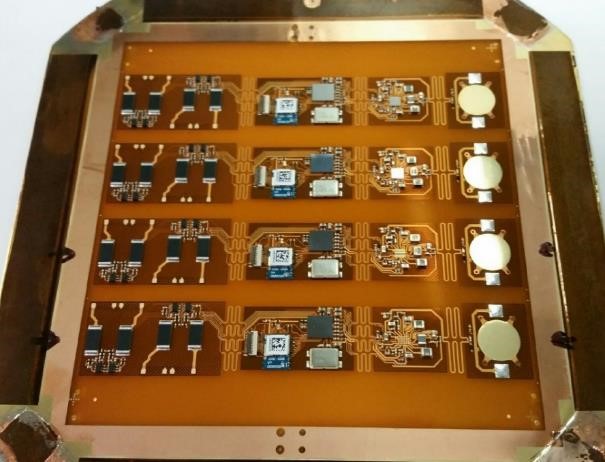Collecting patient data at regular intervals and more frequently than, say, an annual visit, can create what NextFlex refers to as a “personal baseline” for any given patient. What is important is not one’s heart rate or blood pressure compared to a global average that blends age, ethnicity, diet, altitude, and many other factors, but rather comparing it to what it was this morning, yesterday, last week, and last month. It is this perspective that often indicates a need for intervention.

Four wireless EKG sensors ready for final assembly. (Photo by Global Research)
We can compare this approach against how one would diagnose any complex system, and a human patient is significantly more complex than an automated factory or modern vehicle. It is telling that in 2018 we have better conditional data history on our automobiles than we have on ourselves. Today, the average length of a doctor visit in the US is less than 20 minutes and in the UK, it is less than eight minutes, according to a study by the Society of Internal Medicine. In this scenario, the doctor references data points which can be three to 18 months apart, and then bases a conclusion and recommendation upon a combination of other cases they have seen, their vague memory of your personal history, your anecdotal account, and their instinct. This is not a very scientific process. Improved personal baseline data is one very good way to improve the accuracy of future diagnoses.
Since NextFlex was formed in 2015, a key focus has been on wearable and human-interfacing medical sensors and diagnostic devices. NextFlex’s first project call launched development work on many individual sensor technologies including oxygen sensing and oxygen delivery bandages led by Purdue University, Integra LifeSiences, and Western Michigan University; sensing and electric stimulation healing systems led by UC Berkeley and Jabil; a wireless EKG device led by GE Global Research and Binghamton University; and oral biomarker sensors led by PARC and UCSD. Each of these sensor technologies incorporates FHE in their design, delivering four distinct advantages for improving data collection from patients: new sensors, increased data accuracy, improved compliance, and continuous monitoring.
Read more ...

